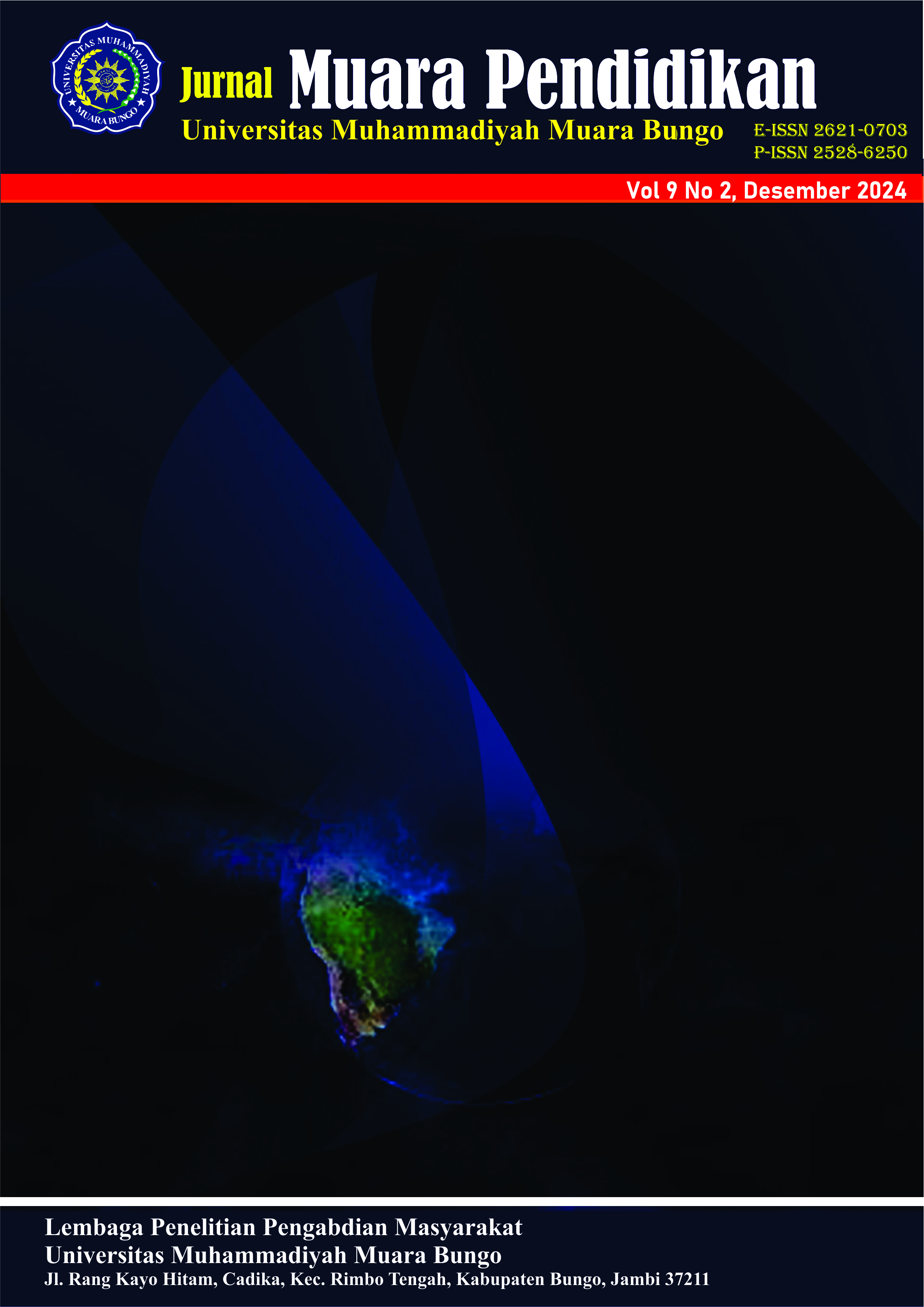MENINGKATKAN PROSES DAN HASIL BELAJAR TEMATIK MENGGUNAKAN MODEL PEMBELAJARAN PREDICT, OBSERVE, EXPLAIN KELAS V SEKOLAH DASAR
Abstract
The problem in this study stems from the number of students who are still passive in teaching and learning activities in the classroom, the absence of creative, innovative, interesting and fun learning models. This study aims to describe the improvement of the process and student learning outcomes.This research is a class action research. The research subjects were fifth grade students of SD Negeri 202/II Simpang Tebat. In its implementation, this research consisted of two cycles conducted by the researcher. Each cycle consists of planning activities, action implementation, observation and reflection. The results of this study indicate that the use of the Predict, Observe, Explain learning model can improve the process and learning outcomes of students. This can be seen from the performance process of educators in cycle I with an average percentage of (60%) in the sufficient category and cycle II with an average percentage of (83%) in the very good category. The learning process of students in cycle I with an average percentage of (27%) in the failure category and in cycle II with an average percentage of (100%) in the excellent category. For the Minimum Completion Criteria standard of 70, this can be seen from the completeness of the learning outcomes of students in cycle I with a percentage of (70.67%) with a good category and cycle II with a percentage of (85.33%) with a very good category that reaches KKM.
Downloads
References
Ahmad Sulhan, Ahmad Kholakul Khairi. (2019). Kosep Dasar Pembelajaran Tematik di Sekolah Dasar (SD/MI) (Wildan (ed.); oktober 20).
Fathonah, F. S. (2016). Penerapan Model Poe (Predict-Observe-Explain) Untuk Meningkatkan Keterampilan Membaca Pemahaman Siswa Kelas IV Sekolah Dasar. Jurnal Pendidikan Guru Sekolah Dasar, 1(1), 171–178.
Frasandy, R. N. (2017). Pembelajaran Tematik Integratif (Model Integrasi Mata Pelajaran Umum SD/MI dengan Nilai Agama. Elementary, Vol.5 No.2, 304–352.
Irfan Syahroni, M. (2023). Analisis Data Kuantitatif. EJurnal Al Musthafa, 3(3), 1–13.https://doi.org/10.62552/ejam.v3i3.64
Nanda Indra, D. (2021). Penelitian Tindakan Kelas untuk guru inspiratif. In CV Adanu Abimata (Vol. 7, Issue 2).
Nasution, R. A. (2019). Implementasi Pembelajaran Tematik dengan Tema Diri Sendiri di TK A PAUD Khairin Kids Medan Tembung. Jurnal Raudhah, 7(1), 111–128. jurnal tarbiyah.uinsu.ac.id ? index.php ? raudhah ? article
Rijali, A. (2019). Analisis Data Kualitatif. Alhadharah: Jurnal Ilmu Dakwah, 17(33), 81. https://doi.org/10.18592/alhadharah.v17i33.2374
Tambun SIE, D. (2020). Analisis Undang-Undang Nomor 20 Tahun 2003 Tentang Sistem Pendidikan Nasional Mencakup BAB IV Pasal 5 Mengenai Hak dan Kewajiban Warga Negara, Orang Tua dan Pemerintah. In Visi Ilmu Sosial dan Humaniora VISH (Vol. 11, Issue 01). https://doi.org/10.17977/um020v16i22022p265-275
Yus’iran, Y., Buraidah, B., & Suswati, L. (2021). Pengaruh Model Pembelajaran Predict Observe-Explain (POE) Terhadap Pemahaman Konsep Pada Materi Suhu Dan Kalor. Gravity Edu ( Jurnal Pendidikan Fisika ), 4(2), 6–9. https://doi.org/10.33627/ge.v4i2.662
Yusuf, W. F. (2018). Yusuf,Wiwin Fachrudin. Implementasi Kurikulum 2013 (K-13) Pada Mata Pelajaran Pendidikan Agama Islam Sekolah Dasar (Sd), 3(2), 263–278.
| Keywords | : |
Keywords:
Proses; Hasil Belajar Tematik; Model POE; Process; Thematic Learning Outcomes;POE Models
|
| Galleys | : | |
| Published | : |
2024-12-05
|
| How to Cite | : |
Hamzah, I., Apdoludin, A., Subhanadri, S., & Eko Putra, A. (2024). MENINGKATKAN PROSES DAN HASIL BELAJAR TEMATIK MENGGUNAKAN MODEL PEMBELAJARAN PREDICT, OBSERVE, EXPLAIN KELAS V SEKOLAH DASAR. Jurnal Muara Pendidikan, 9(2), 389–394. https://doi.org/10.52060/mp.v9i2.2444
|
| Issue | : |



.png)



.png)


.png)
.png)
.png)


_SCCC.png)

